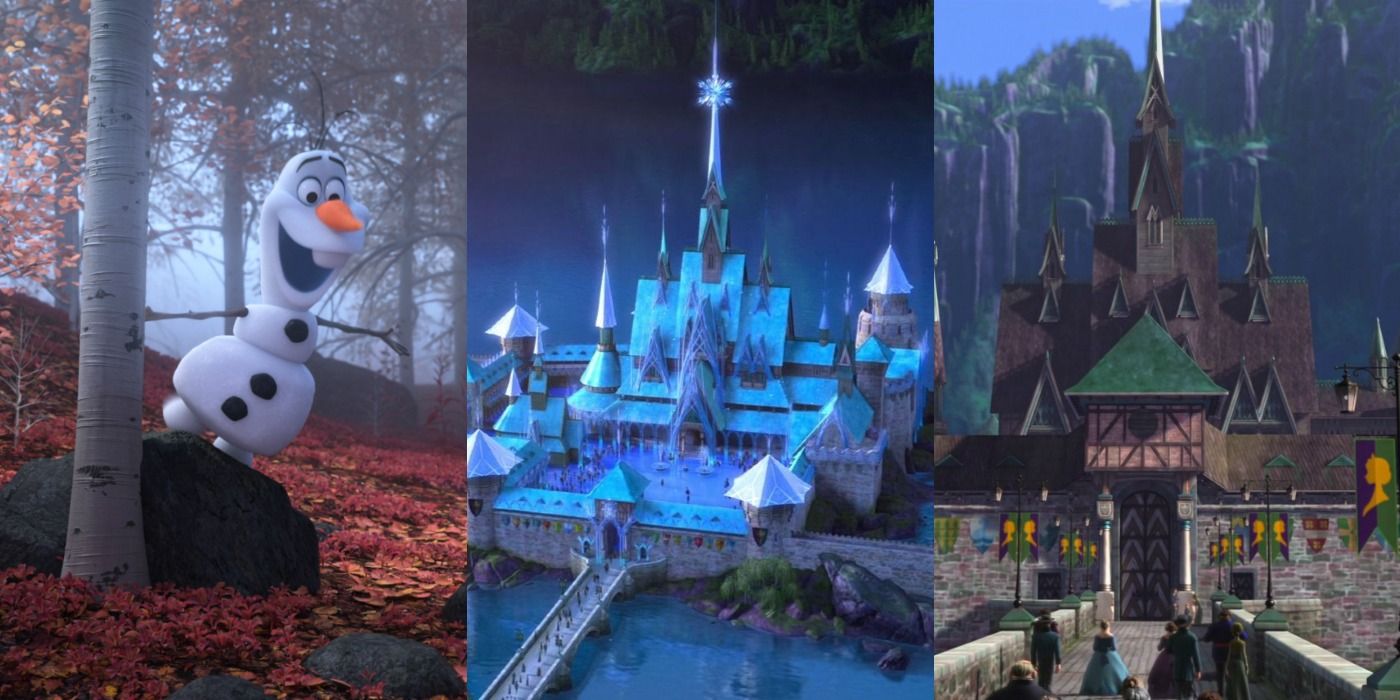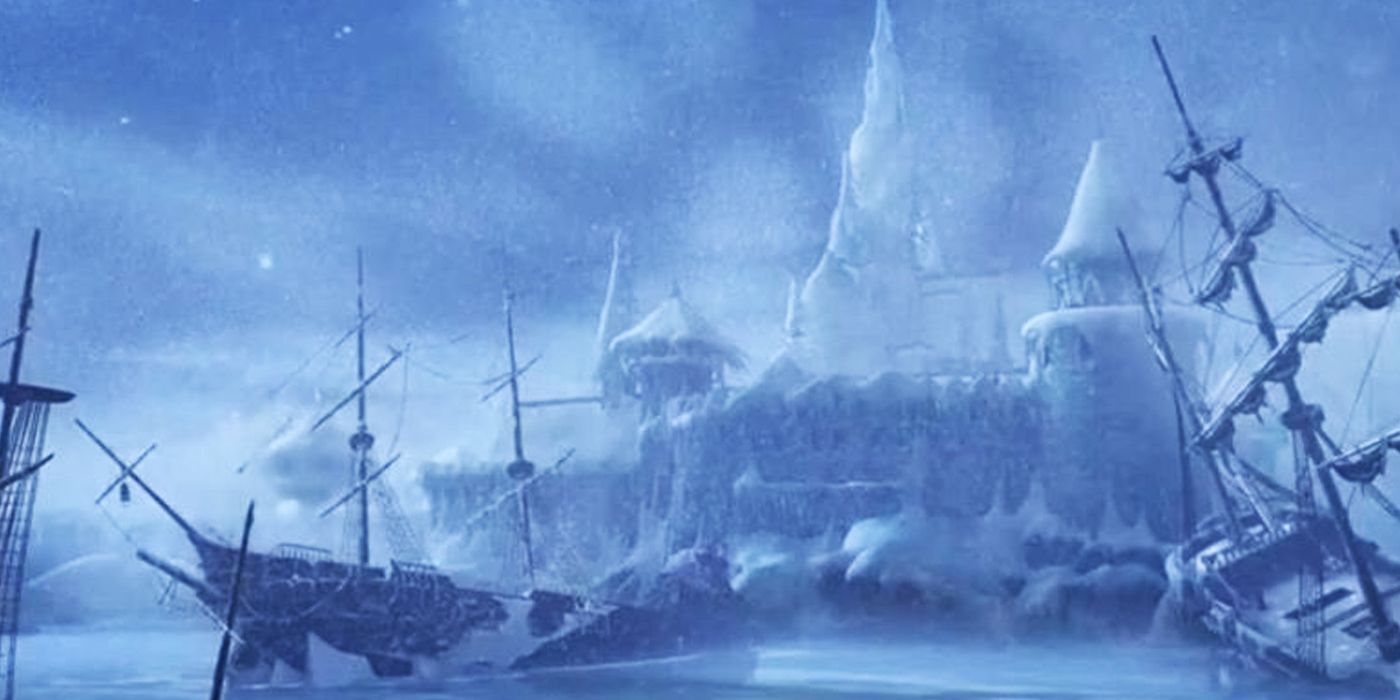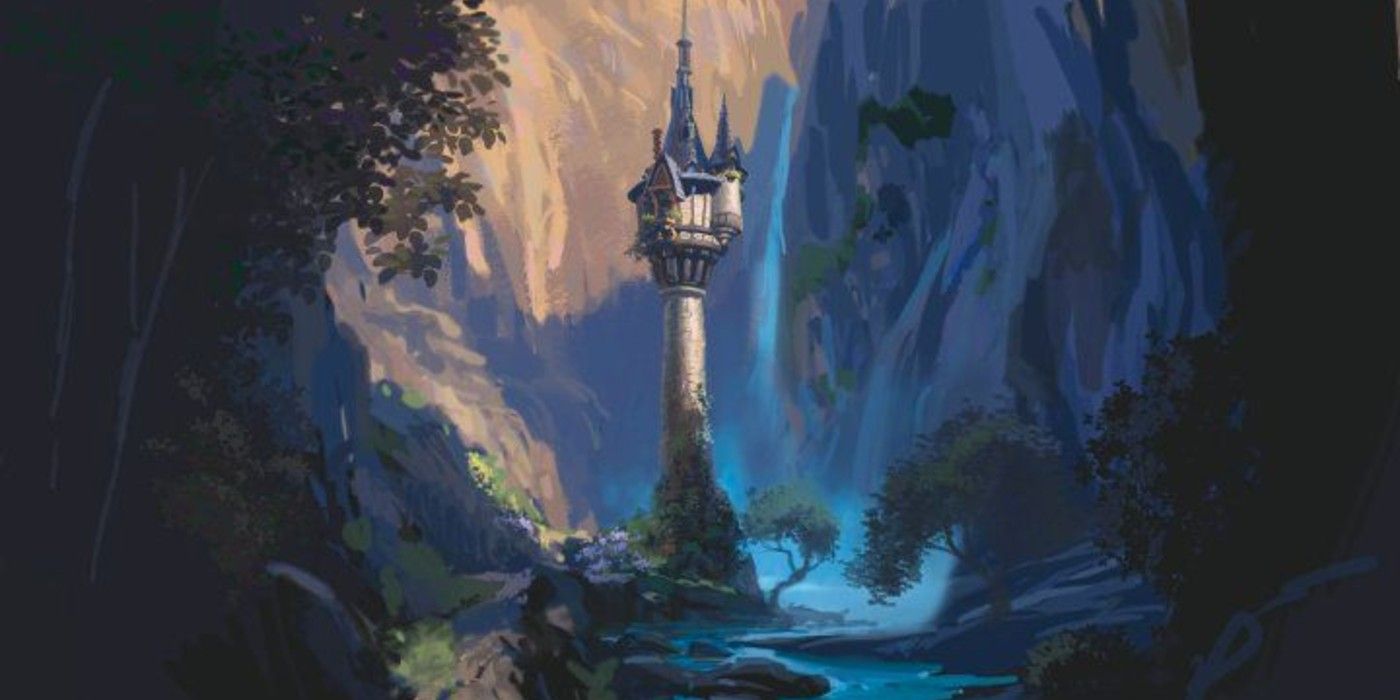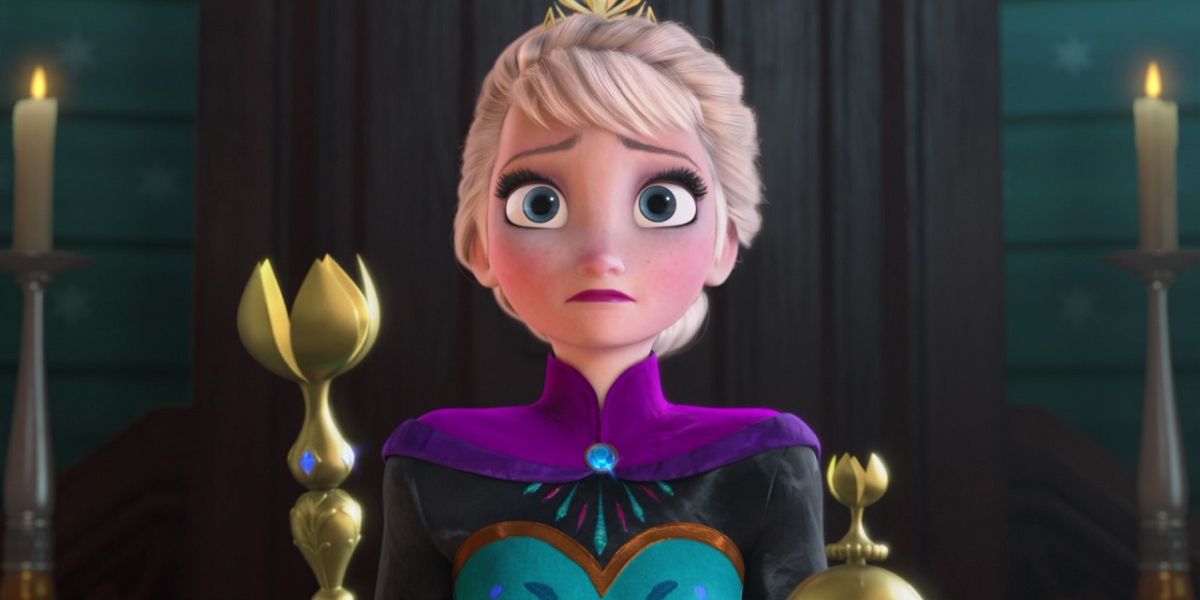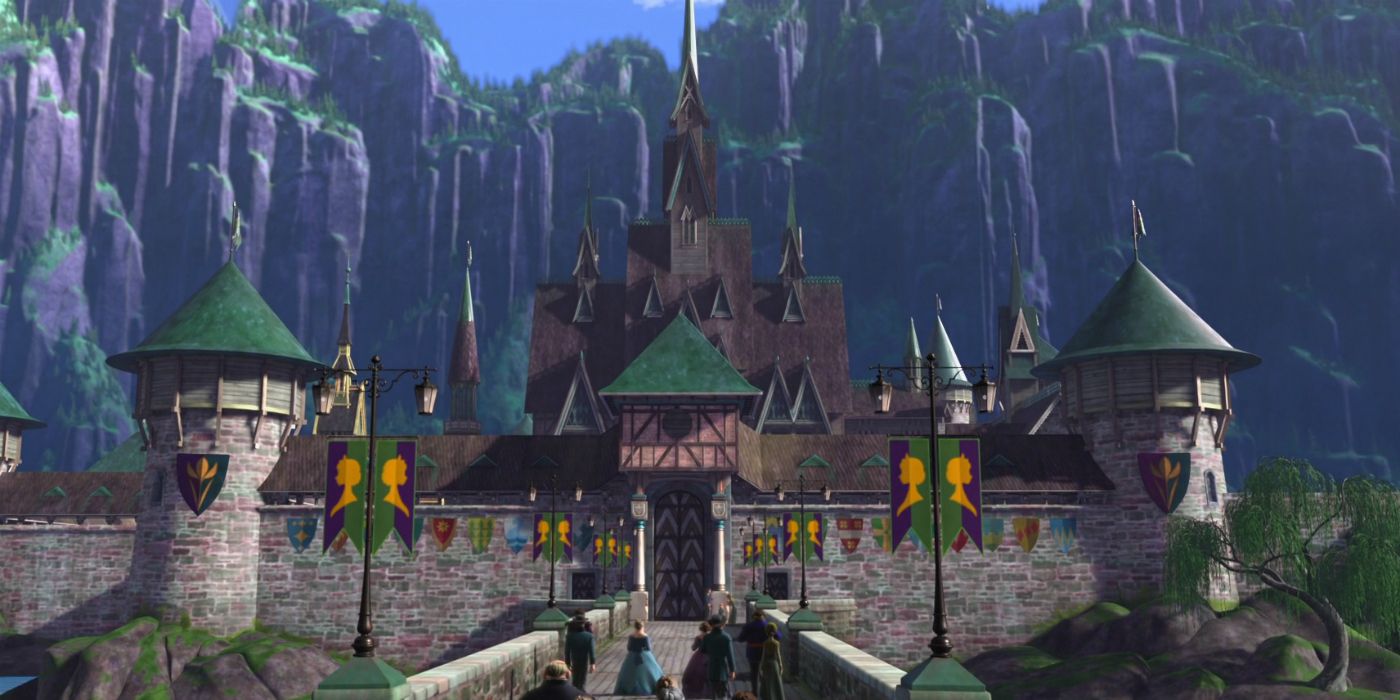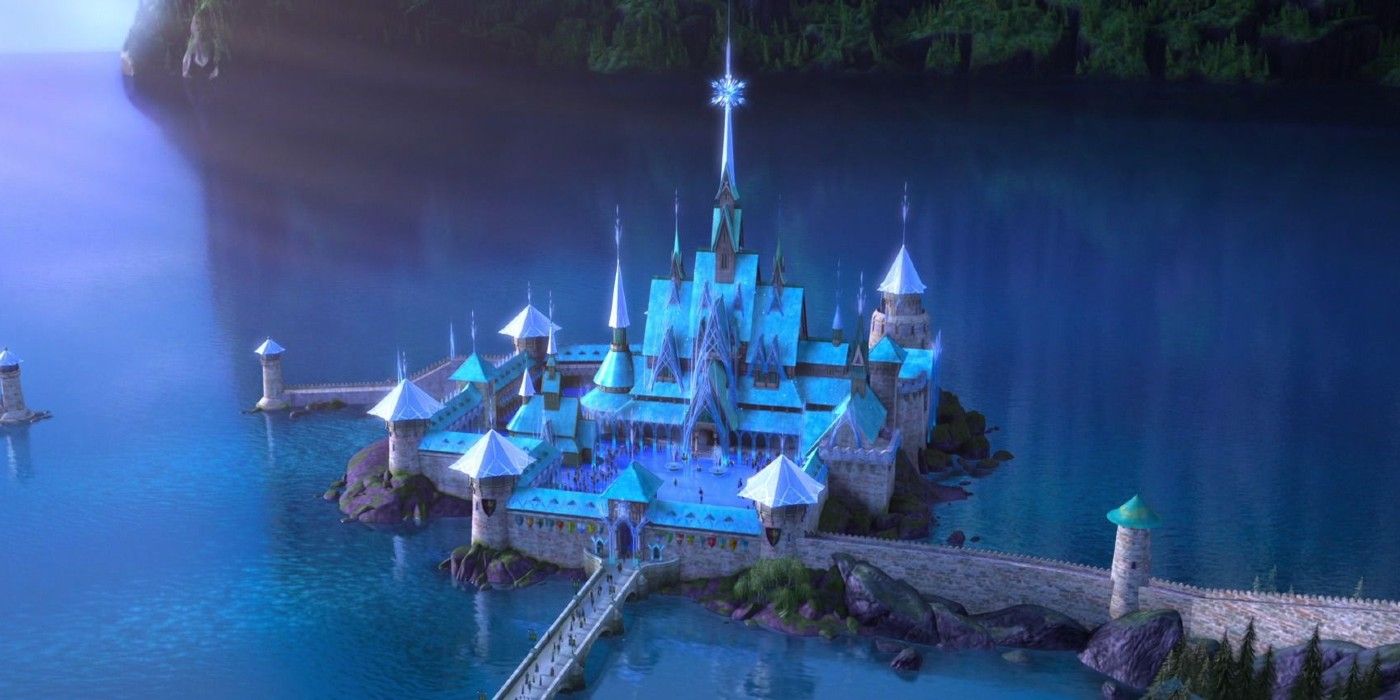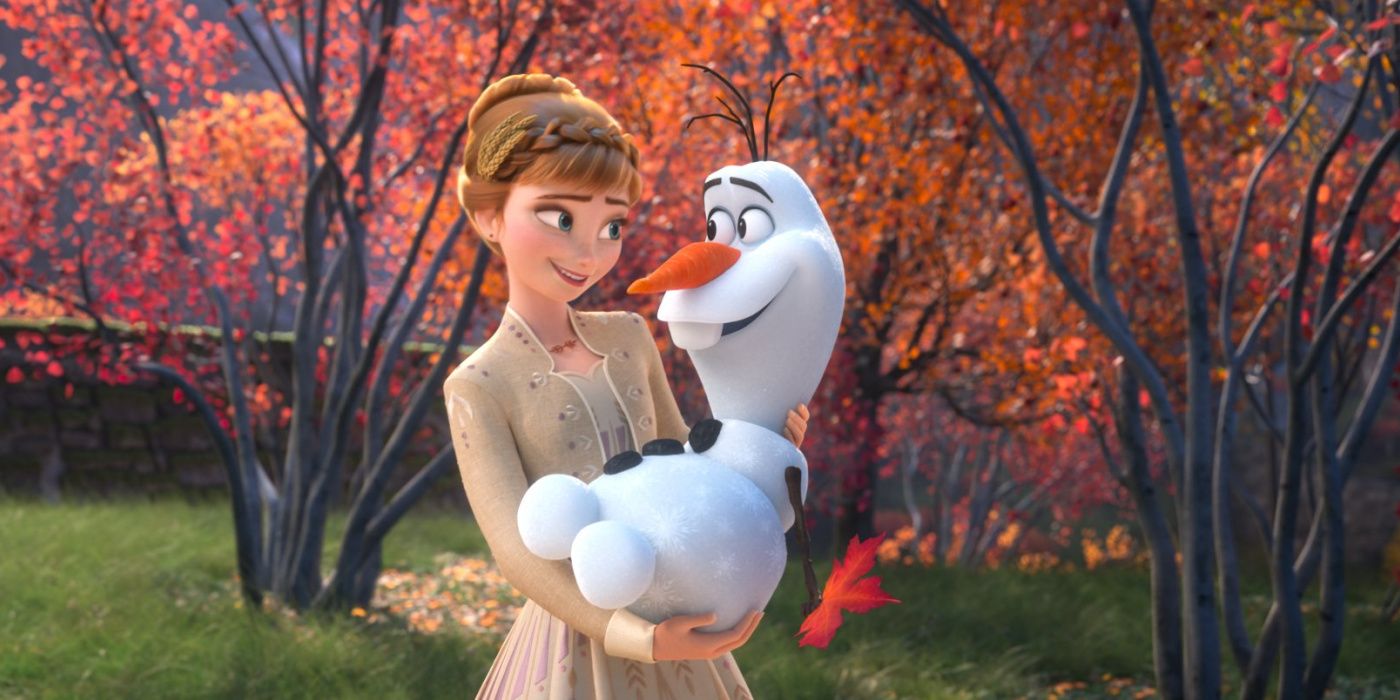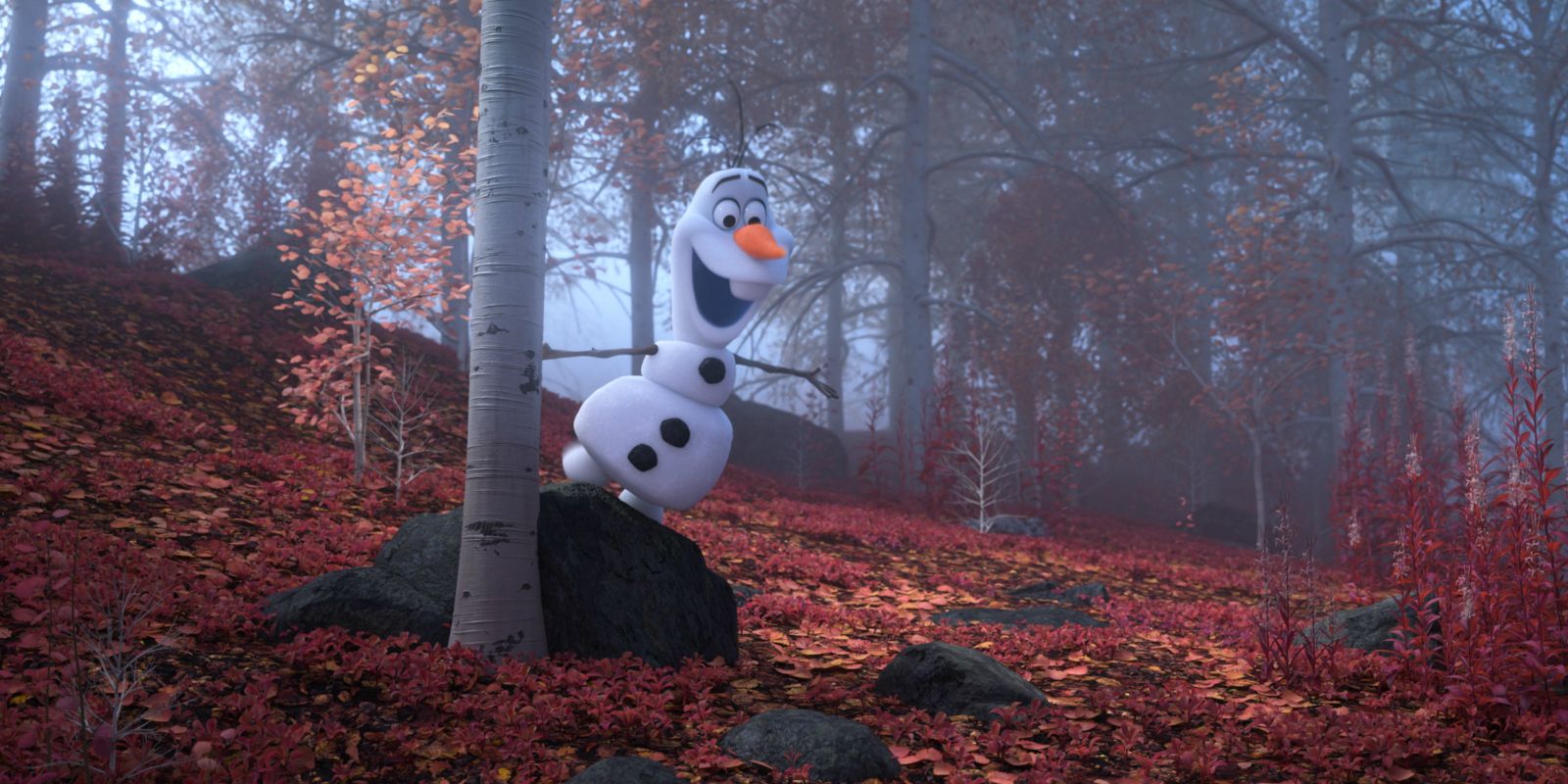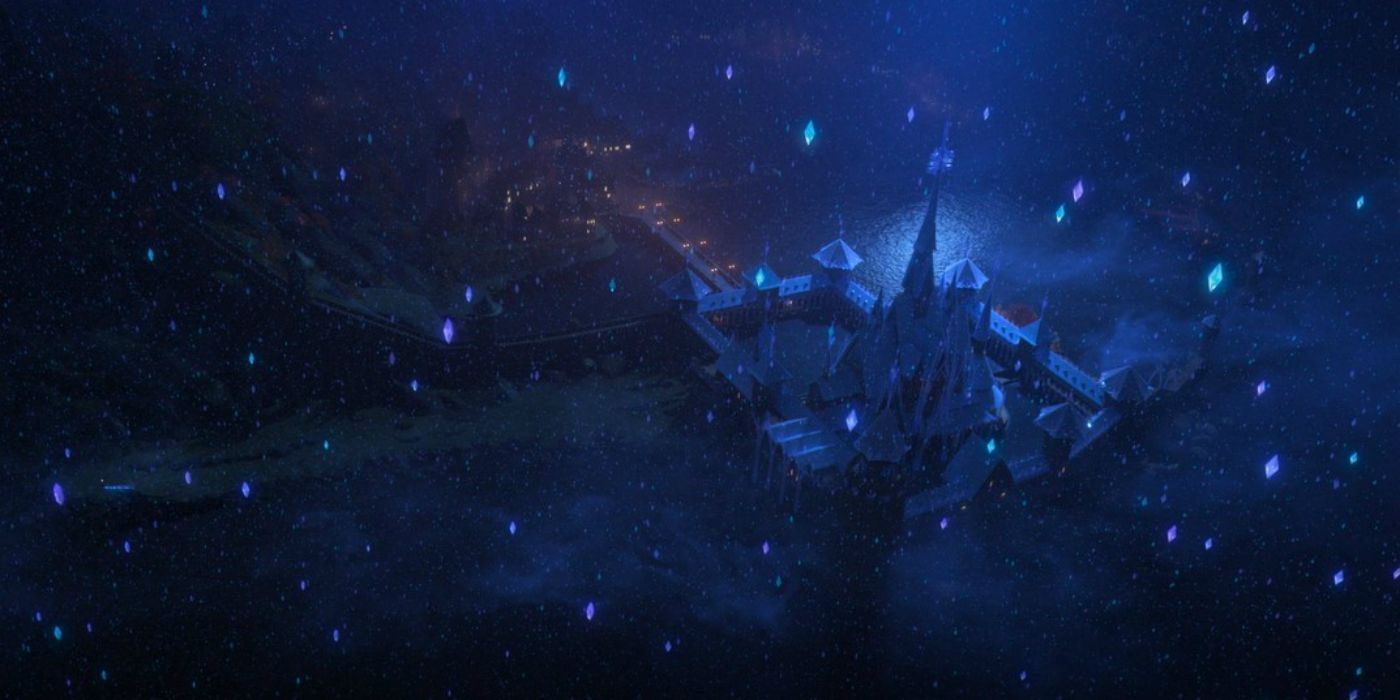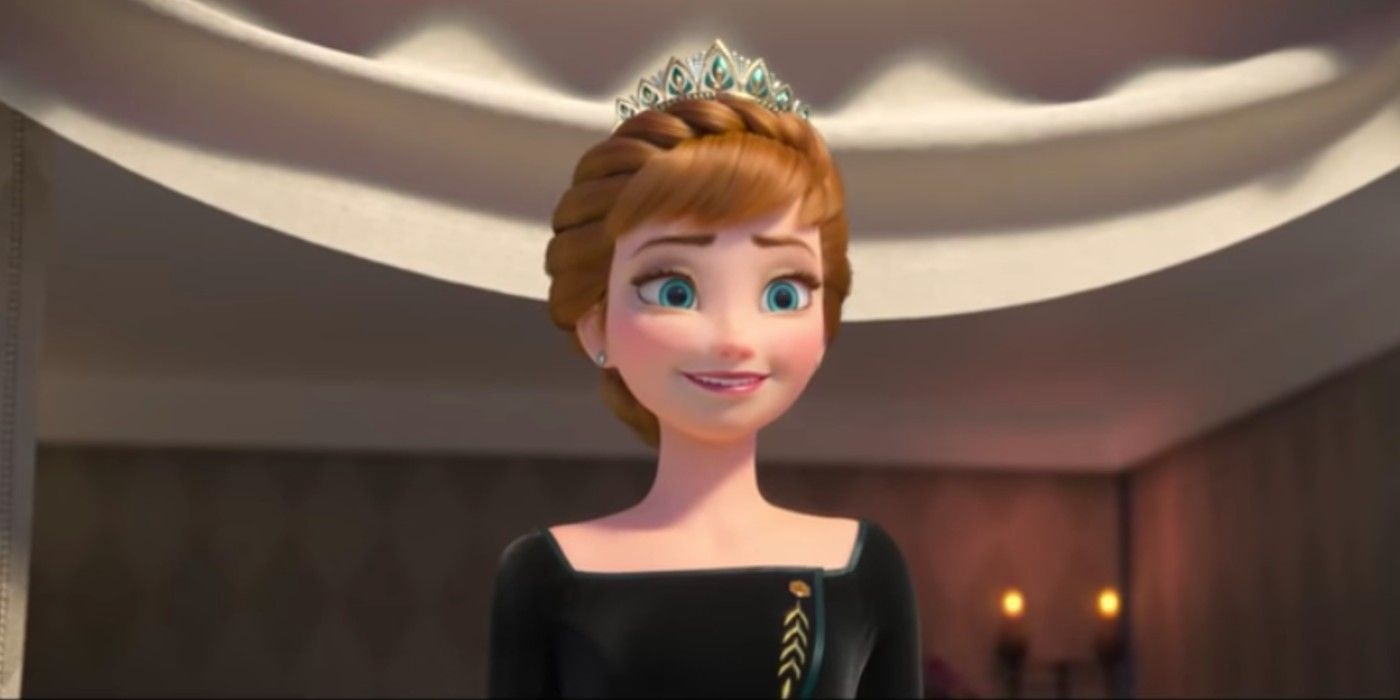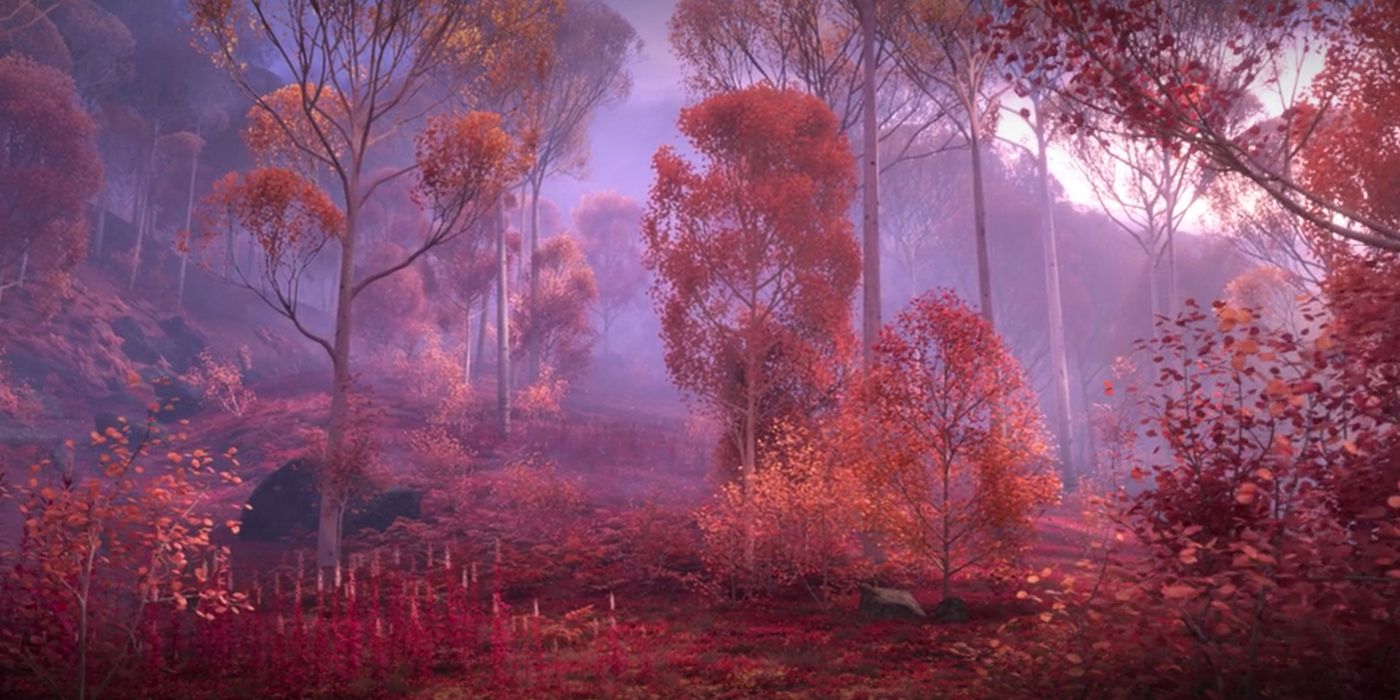The Frozen franchise is by far one of Disney's most successful, not only in recent years but of all time. The key to a beloved fantasy movie like this is not only the characters and their narrative arcs but also the incredible world that they inhabit. Without Arendelle, the adventure just wouldn't be the same.
A great deal of thought went into creating this fantastical landscape. From the costumes to the architecture, the name, and the motifs used throughout the Kingdom, every detail is precise and meticulous. Arendelle is really the culmination of two films and years of work, resulting in a truly spectacular genre setting.
Changing Landscape Between Films
The Art Of Frozen 2 book by Jessica Julius provides a great deal of detail in the development of Arendelle as a Kingdom. The original Frozen had far fewer needs in terms of the character's interactions with the setting itself in comparison to that of Frozen 2.
While this doesn't mean that either version of Arendelle is better, the Arendelle of the sequel has certainly been changed to accommodate for the story shifts. Some buildings are in different locations, some of the streets may be slightly altered, but ultimately there is enough continuity between the two.
Linked To Kingdom of Corona
Eagle-eyed viewers are always spotting Easter eggs from other Disney films woven into the visual tapestry that the animation studio is talented enough to create. For the coronation of Elsa, one connection to a recent Disney hit certainly got fans' attention.
Amongst the crowd, both Tangled's Flynn and Rapunzel can be seen, clearly linking the Kingdoms of Corona and Arendelle. This was such a secret cameo that even one of the directors, Nathan Greno, actually missed it!
Color Scheme
Although the franchise is associated with the blues and whites of Elsa and the reds and oranges of the seasonal shift in Frozen 2, Arendelle itself actually has its own color palette, which is kept to in the costuming and some of the interior designs of the buildings.
Perhaps making a nod to The Wizard Of Oz, green is the primary color of the location. This is mainly seen with the guard's uniforms, although the color is even present in both Elsa and Anna's coronation dresses.
Wheat Motifs
In Frozen 2, the branding of Arendelle shifted slightly to celebrate the autumnal season and the successful harvest. While the colors featured in the design palette of the animated feature changed, so too did some of the symbolism.
The wheat motif became used across much of Arendelle. From the banners on the lampposts to the dresses that Anna wears throughout the film, this symbol became synonymous with the kingdom and represented a connection to both Arendelle and its culture. It's also a sign of prosperity.
Tactically Constructed
One of the noticeable things about Arendelle, which becomes more obvious when Anna and Elsa travel across its surrounding wilderness, is that the Kingdom was clearly built for tactical defense purposes. The natural environment provides brilliant shields for Arendelle's citizens.
Arendelle is surrounded by mountains, which are almost impossible to attack, giving its people additional protection. The town also has a great water source, again another great form of protection, but also a resource vital for the survival of the society.
Changing With The Seasons
It's clear that from a visual standpoint, the changing seasons and is very difficult, and therefore expensive, to animate. Snow and water are notoriously tricky to get right and render. However, Arendelle has been shown in a variety of seasons.
In fact, every season has been portrayed in one of the movies or shorts that have been created as part of the larger franchise. Arendelle decorates appropriately for each period of time, with new banners and changing color palettes amongst the clothing.
Forever Linked To The Enchanted Forest
While all these seasons have been displayed, usually it's winter that stands out the most for Frozen. However, Frozen 2's fall themes gave room for the Enchanted Forest to be introduced. For years this had been a mysterious location and was also the place where Elsa's mother grew up.
With all restored in the Kingdom and Elsa now taking her place as some kind of leader amongst the Forest people, both Arendelle and the Enchanted lands are forever intertwined. The Forest is therefore not part of the Kingdom but a slightly different entity, now led by a new monarch in some capacity.
Time Period
In Frozen 2, there's a map that contains a date, demonstrating the time period that Frozen is technically set in or around. Of course, Arendelle is based on the cities and towns of Norway, but the era of its architecture has sometimes remained unclear.
The few dates that are seen are all in the 1840s. This means that 19th-century designs would have certainly had an impact on the creation of the setting, although many of the buildings would have certainly have dated back to a much older period of time.
Crocus Symbol
The crocus is a real-world flower that can be found in the same part of the world as Arendelle. Interestingly, the colors of the plant are reflected in some of the attire and designs of Arendelle, the sweeter purples matching well with the Kingdom's greens.
However, the crocus has a much larger presence in Frozen than one might expect. It's actually featured in the crest of the Kingdom, shown on the flags, banners, and even some of the clothing of the royals.
Real-World Place
No matter the era of Disney animation's movie development, all of their projects have to contain some kind of realistic element in order for the narrative to feel authentic. For Frozen, the setting itself is partially based on some real-life locations.
There's actually a place called Arendal in Norway, although there's a village in Austria, Hallstatt, that also bears a great resemblance to the Kingdom. Hallstatt shares so many similar qualities that tourists have now overrun the area, due to its similarities with the films.

